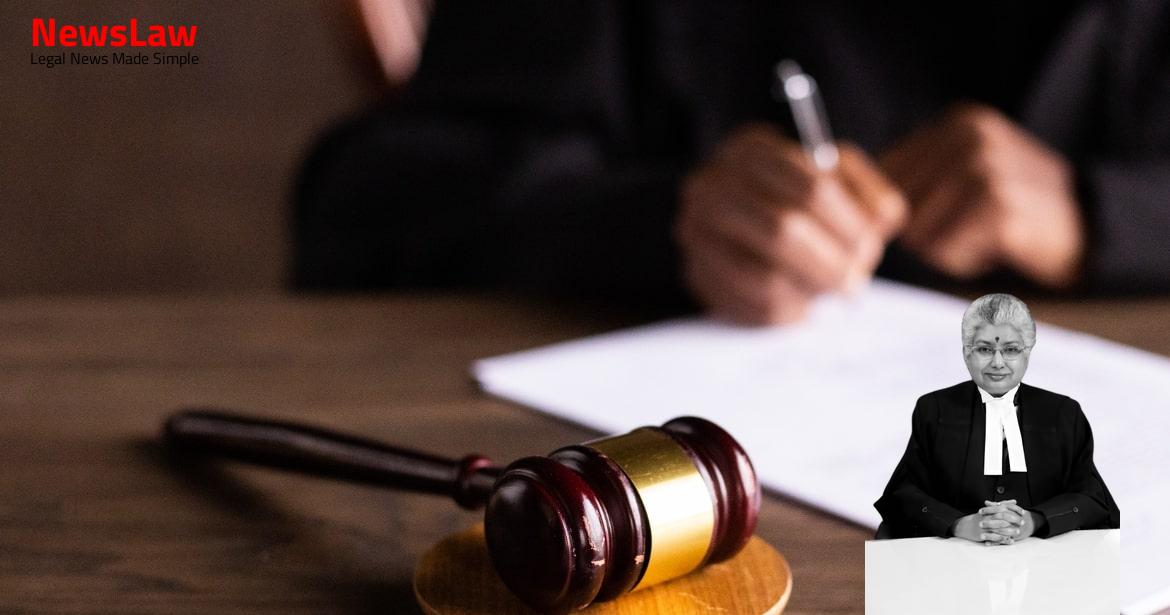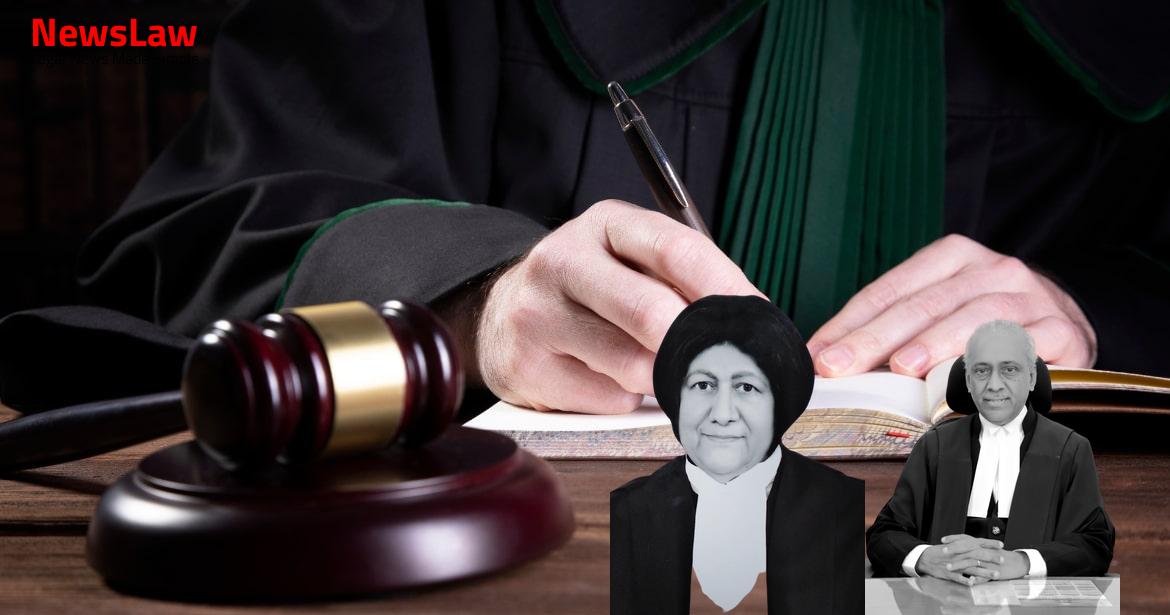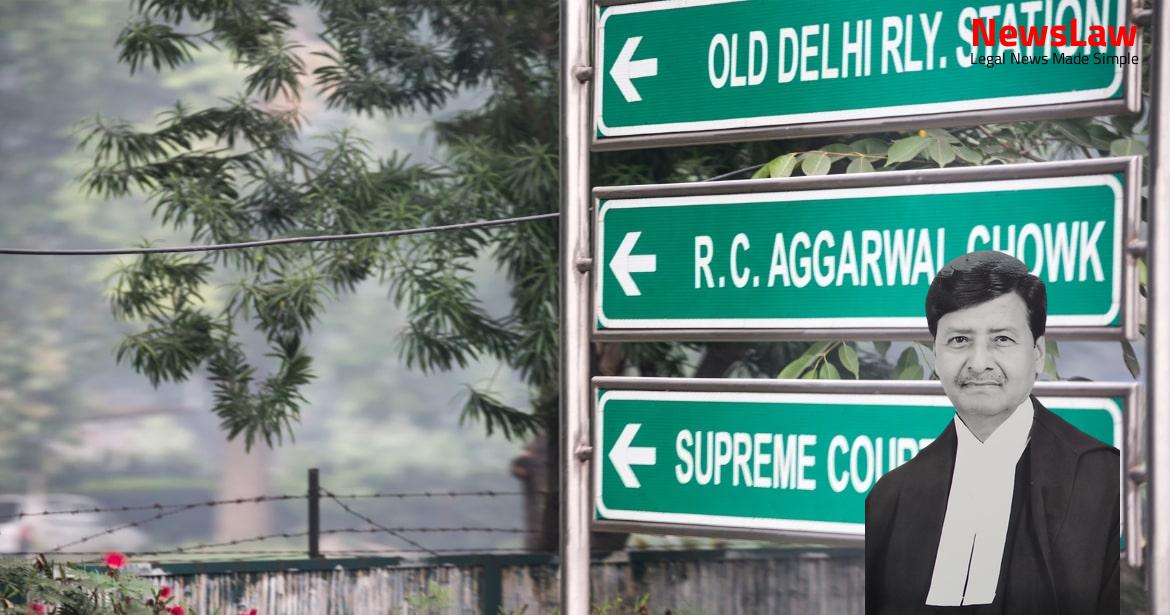Delve into the in-depth legal analysis by the court regarding the withdrawal of a Resolution Plan under the Insolvency and Bankruptcy Code. Discover the implications and considerations surrounding this complex issue within the legal framework governing insolvency proceedings.
Facts
- The NCLT allowed the SEROCO application and confirmed SEROCO’s Resolution Plan previously approved by the Arya-CoC.
- SEROCO submitted a revised Resolution Plan to the Arya-CoC citing changed circumstances that made it unable to pay the entire consideration as initially envisaged.
- The reasons provided by SEROCO for the revision included deteriorated physical condition of Arya Filament’s machinery, financial losses during the COVID-19 pandemic, decreased demand/sales, and reduced funds due to the pandemic.
- The revised Resolution Plan by SEROCO offered to pay Rs. 5,29,22,000.
- An application was filed by SEROCO before the NCLT seeking reliefs based on the changed circumstances mentioned above.
- The application sought approval of the revised Resolution Plan considering the altered economic conditions due to the COVID-19 pandemic.
- The NCLT was requested to review and confirm the SEROCO Resolution Plan in light of the new circumstances.
- Kundan Care made an oral request for withdrawal of its application to the Court, which was rejected.
- The NCLAT reversed the NCLT’s findings and disallowed the termination of the PPA even in the event of Astonfield undergoing liquidation.
- GUVNL challenged NCLAT’s judgment in the GUVNL Appeal before the Court, leading to further legal proceedings.
- The NCLAT held that once the Resolution Plan was approved by the CoC, withdrawal could not be permitted.
- The NCLAT dismissed an appeal by Seroco against an NCLT order, relating to modification of a Resolution Plan for Arya Filaments.
- The NCLAT partly upheld the NCLT’s decision in some aspects, regarding Seroco’s modification request for the Resolution Plan of Arya Filaments.
- The NCLAT upheld the rejection of Seroco’s modification request based on various reasons such as Seroco being the sole Resolution Applicant and aware of Arya Filaments’ financial condition.
- The NCLAT also mentioned the issue of res judicata in the context of a previous withdrawal application being rejected by the Adjudicating Authority.
- The NCLAT discussed the reasons why the withdrawal of a Resolution Plan approved by the CoC could not be allowed, including contravention of IBC principles, lack of specific provisions for withdrawal, and potential adverse effects on the CIRP.
Also Read: Electoral Malpractices in Mayor Election
Arguments
- The Adjudicating Authority has inherent powers to direct withdrawal under Section 60(5)(c) of the IBC
- Rule 11 of the NCLT Rules 2016 also grants the NCLT with inherent powers
- Ebix contends that the E-RP failed in its duties under Section 29 of the IBC by not informing about ongoing investigations against Educomp
- E-CoC supports Ebix’s argument and requests an extension of the limitation period for conducting the insolvency process if Ebix succeeds
- Upon the approval of a Resolution Plan by the CoC, a concluded contract is formed between the Resolution Applicant and CoC
- Withdrawal of the Resolution Plan would breach the concluded contract and violate clauses giving rights to E-CoC under the IBC objective noted in the Swiss Ribbons case to ensure revival and continuity of the Corporate Debtor
- The Respondents argue that a concluded contract is formed when the Resolution Plan is approved by the CoC.
- Reference is made to the Specific Relief (Amendment) Act 2018, which emphasizes specific performance in contract enforcement.
- Mr. Nakul Dewan argues that the RP’s obligation to provide information under Section 29 should be seen as a best effort basis.
- Mr. Jayant Mehta, representing Arya-CoC, supports the arguments made by E-CoC and A-CoC.
- There is no direct provision in the IBC for the withdrawal of a Resolution Plan by a Resolution Applicant once approved by the CoC.
- Section 12 of the IBC sets a time-bound period for the completion of the CIRP, with extensions possible.
- The delay in the process is not attributed to the A-RP or the A-CoC.
- A Resolution Plan approved by the CoC is submitted to the NCLT by the RP under Section 30(6) of the IBC.
Also Read: Balancing Power and Transparency: Electoral Bonds Struck Down, Disclosure Mandated
Analysis
- The Court referred to the Singapore Court of Appeal’s characterization of a scheme of arrangement as a ‘contractual scheme’.
- The BLRC Report was cited for the principle of commercial wisdom of the CoC in K Sashidhar case.
- Regulation 36B (4A) of CIRP regulations requires performance security after plan approval by creditors.
- A two judge Bench ruling in Brilliant Alloys case declared Regulation 30A as directory, not mandatory.
- The judgment emphasized that negotiations post CoC approval of Resolution Plan are not permissible.
- The ruling in ArcelorMittal India v. Satish Kumar Gupta highlighted that CoC disapproval of a Plan under Section 29A is appealable before NCLT.
- The Court rejected Kundan Care’s request for modification under Article 142 for settlement.
- The judgements stressed on predictability and finality in insolvency proceedings.
- The UNCITRAL Guide and BLRC Report prioritize viability of the Corporate Debtor in insolvency.
- The judgement underscored the importance of staying within the statutory framework to avoid delays and complexities.
- Resolution Plan submitted by a Resolution Respondent is irrevocable.
- Ebix will be immune from prosecution or punishment related to any misconduct in the affairs of Educomp prior to the CIRP.
- Investigations into the affairs of Educomp by CBI and SFIO do not affect Ebix.
- Ebix’s Resolution Plans do not allow them to revise or withdraw after approval by E-CoC but before confirmation by the Adjudication Authority.
- The Report noted a delay in the resolution process with over seventy-one percent cases pending for more than 180 days, deviating from the original objective and timeline of the IBC.
- Delays were attributed to factors such as NCLT taking time in admitting CIRPs, late bids by Resolution Applicants, and multiplicity of litigation leading to inefficiency and expense.
- The inordinate delays cause commercial uncertainty, degradation in the value of Corporate Debtor, and make the insolvency process inefficient and expensive.
- Urging NCLT and NCLAT to be sensitive to these delays and avoid adjournments that hinder the efficacy of the judicial process.
- Highlighting the importance of avoiding the fate of the previous insolvency regime by strictly adhering to timelines under the IBC and clearing pending resolution plans promptly.
Also Read: Recall of Resolution Plan Approval: Legal Analysis
Decision
- The parties to the appeal preferred by Kundan Care (Civil Appeal 3560 of 2020) shall abide by the directions issued by the Court in exercise of its Article 142 powers as a one-time relief.
- The appeals preferred by Ebix (Civil Appeal 3224 of 2020) and Seroco (Civil Appeal 295 of 2021) stand dismissed.
- The successful Resolution Applicant accepts the LOI and submits a PBG.
- Pending application(s), if any, shall stand disposed of.
- On 27 November 2019, GUVNL moved this Court in appeal against the order of the NCLAT dated 15 October 2019 (this Court eventually dismissed the appeal).
Case Title: EBIX SINGAPORE PTE LTD. Vs. COMMITTEE OF CREDITORS OF EDUCOMP SOLUTIONS LIMITED (2021 INSC 468)
Case Number: C.A. No.-003224 / 2020



